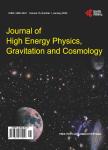A New Unified Electro-Gravity Theory for the Electron, and the Fundamental Origin of the Fine Structure Constant and the Casimir Effect
A New Unified Electro-Gravity Theory for the Electron, and the Fundamental Origin of the Fine Structure Constant and the Casimir Effect作者机构:Department of Electrical and Computer Engineering Tandon School of Engineering New York University New York USA
出 版 物:《Journal of High Energy Physics, Gravitation and Cosmology》 (高能物理(英文))
年 卷 期:2021年第7卷第1期
页 面:66-87页
学科分类:07[理学] 0701[理学-数学] 070101[理学-基础数学]
主 题:Electron Structure Fine-Structure Constant Casimir Effect Unified Electro-Gravity Theory
摘 要:A rigorous model for the electron is presented by generalizing the Coulomb’s Law or Gauss’s Law of electrostatics, using a unified theory of electricity and gravity. The permittivity of the free-space is allowed to be variable, dependent on the energy density associated with the electric field at a given location, employing generalized concepts of gravity and mass/energy density. The electric field becomes a non-linear function of the source charge, where the concept of the energy density needs to be properly defined. Stable solutions are derived for a spherically symmetric, surface-charge distribution of an elementary charge. This is implemented by assuming that the gravitational field and its equivalent permittivity function is proportional to the energy density, as a simple first-order approximation, with the constant of proportionality, referred to as the Unified Electro-Gravity (UEG) constant. The stable solution with the lowest mass/energy is assumed to represent a “static electron without any spin. Further, assuming that the mass/energy of a static electron is half of the total mass/energy of an electron including its spin contribution, the required UEG constant is estimated. More fundamentally, the lowest stable mass of a static elementary charged particle, its associated classical radius, and the UEG constant are related to each other by a dimensionless constant, independent of any specific value of the charge or mass of the particle. This dimensionless constant is numerologically found to be closely related to the fine structure constant. This possible origin of the fine structure constant is further strengthened by applying the proposed theory to successfully model the Casimir effect, from which approximately the same above relationship between the UEG constant, electron’s mass and classical radius, and the fine structure constant, emerges.



